How to Deal with Site Images during WordPress Migration
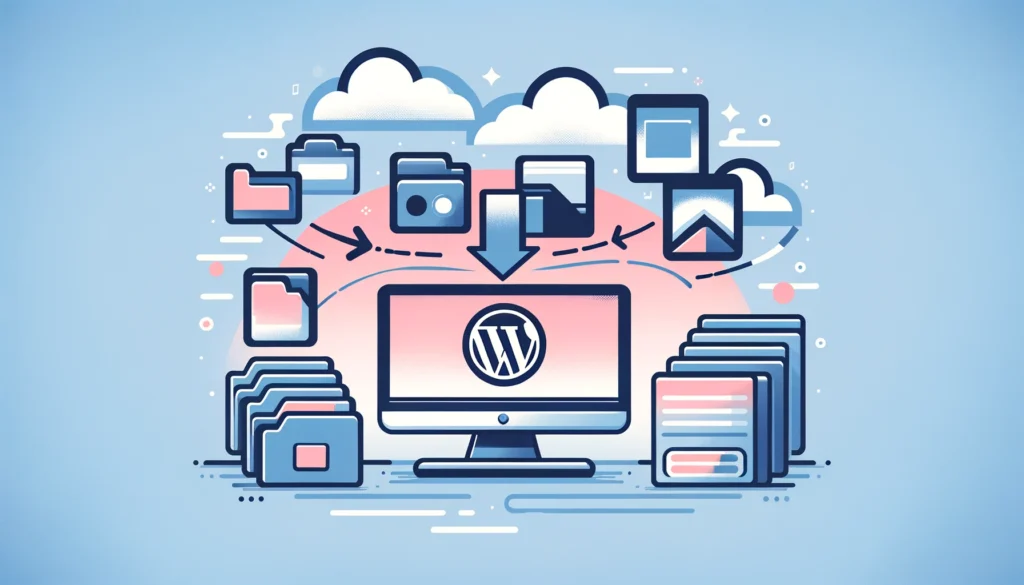
If you are a WordPress site owner or developer planning to migrate your WordPress site to a new WordPress host and feeling a bit anxious about potential issues like site errors, heavy downtime, and image issues, don’t worry.
In this article, we will discuss and walk you through how to deal with your site migration, mainly focusing on managing image-related challenges during WordPress migration.
Before dealing with site image issues, you must know site migration dos and don’ts to ensure smooth migration. These tips would be helpful to guide you through the migration process and avoid common pitfalls.
Do’s and Don’ts of WordPress Site Migration
While moving your WordPress site may seem simple, there is always a chance of unexpected issues or errors afterward. You never know when a hiccup might occur and impact your live site.
That’s why taking some essential steps before and after migrating any website is important. These actions are not just about handling images; they will also help ensure the smooth transition of your entire WordPress site.
5 DO’s Of Migration
Here are the important steps you should take before and after migrating your WordPress site.
1. Backup Your WordPress Site
The first and most crucial step is backing up your WordPress site before migrating. In case any issues arise during the migration process, having a backup serves as an undo option for any issue. This will allow you to rollback and easily restore your WordPress site to its previous running site. This backup should be for images and for your entire site, including files, plugins, themes, and all other components/content.
2. Check the File Permission
Another aspect to consider is to check the file permissions on your new hosting provider. It’s an important action/step to ensure that the file permissions match with your old hosting provider. It will avoid any potential issues, such as image problems (not accessible).
3. Check Your PHP Version
The PHP version is vital for any WordPress site. If your site is running on an older PHP version like PHP 7, and your new hosting provider doesn’t support it, then migrating the site to any higher PHP version like 8.3 may lead to PHP syntax errors due to version incompatibilities.
Also, there is a high chance that any of your WordPress plugins may not support that PHP version. Therefore, it’s crucial for everyone to check and test the PHP version compatibility beforehand.
4. Check Your WordPress Version
Another step that you will need to add to your do list is checking and updating your WordPress version before migrating your site. If you can’t update to the latest version due to older plugin versions or themes, you will need to search for a hosting platform that supports and offers your specific WordPress version.
Good news! InstaWP offers a choice to create your WordPress site on any WordPress versions and takes care of this problem.
5. Staging or Dummy URL
You may overlook whether your new hosting provider provides a staging or dummy URL for testing their WordPress site before going live. It allows you to test your site on the new server/hosting without impacting the live site.
You can test for your preferred WordPress and PHP version compatibility. Once satisfied and comfortable, you can make your site live by simply pointing to your domain.
You can pick a WordPress migration plugin or a user-friendly migration platform like InstaWP to change your site hosting.
Alternatively, if you are tech-savvy and comfortable with methods like SSH and WP CLI for transferring your site files, you can choose to go that route. However, even after transferring files to your new host using this method, it can be tedious as you will need to connect the database and configure everything accordingly.
4 Don’ts of Migration:
While we have covered key points in our Do’s section, there are several other important actions that you do not consider both before and after migration.
1. Avoid Activating Caching Plugins
If you are migrating your site, the first thing that you should consider is deactivating your caching plugin. This step is crucial because caching plugins often cause issues or conflict during file transfers, and after the site migration, you may see any errors. So, it’s important to check and ensure that caching plugins are not activated before proceeding with migration.
2. Don’t Activate Any CDN plugin
If you are using any CDN, it’s crucial to refrain from activating any CDN plugins during or before the migration process.
Deactivating CDN plugins is equally important as deactivating cache plugins. Because it can lead to image issues upon migration. CDNs primarily serve static content like images, and activating them during migration can cause complications and image URL issues.
3. Don’t Migrate on Your Peak Hours
It’s an ideal practice not to migrate your WordPress site at your peak hours. If you run a WooCommerce store and migrate it during peak times, your customers may experience downtime.
You can lower the downtime of your site with staging or dummy URLs, but there is still a (minimal) downtime that results in potential loss of business. Therefore, please avoid doing it on the peak hours and opt for when your site experiences low traffic, such as midnight 2 AM.
Additionally, while migrating your site, you can set up a maintenance mode/page instead of just leaving any server error that your users will see on your website upon visit.
4. Don’t Directly Point Your Domain
After migrating your site, you should not directly point to the domain. Instead, migrate your site to a staging or dummy URL first. This allows you to compare the newly migrated site with your live one. You can also assess disk usage and image loading during this comparison.
Now that you have learned the steps to take before and after migration, let’s shift our focus to dealing with site images now.
As mentioned earlier, this article will primarily cover handling site images during the migration. So, let’s look at how to manage them while migrating your website.
How to Deal With Site Images During WordPress Migration
Before we dive in, please note that if your images are optimized with ShortPixel, migrating your website to a new hosting provider would not affect the image optimization.
If you copy all the images and the database, they will remain optimized, saving you from the hassle of re-optimizing them. You can find more information here: ShortPixel – Images Still Be Optimized.
However, despite this assurance, image challenges can still arise during migration. It’s totally unpredictable when something might go wrong. So, let’s explore how you can tackle these challenges quickly throughout the migration process.
Here, we will use InstaWP to test and migrate the site from one host to another.
Why InstaWP? Because it offers an advanced testing platform and a dummy URL feature.
With just a few clicks, you can create a clone/staging of your live site, create backups, change PHP versions, and many more, making it the ideal platform for testing and migrating your site.

1. Create a Clone/Staging site With InstaWP
If you haven’t signed up for InstaWP yet, start by signing up for an account on their platform from their signup page. Once you have completed the signup process, you can create a clone or staging site with their platform.
Here are the simple steps:
- Navigate to your WordPress Dashboard.
- Go to Plugins > Add New and search for “InstaWP Connect.”
- Install and Activate the plugin.
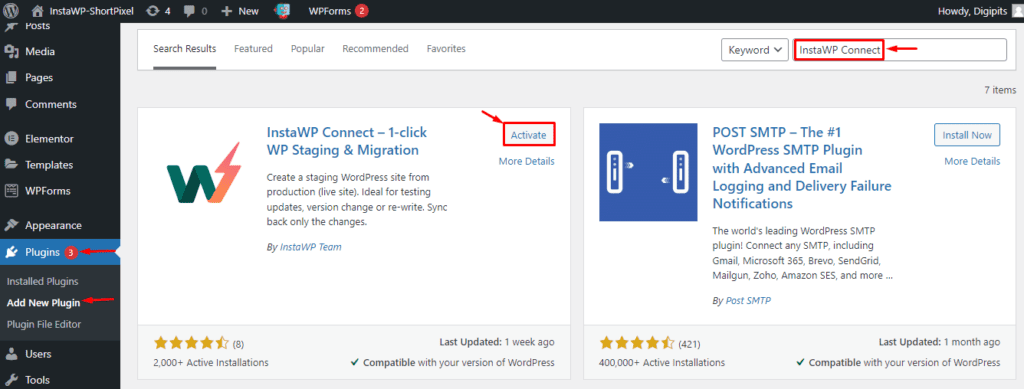
- After installation, go to Tools > InstaWP and click Connect.
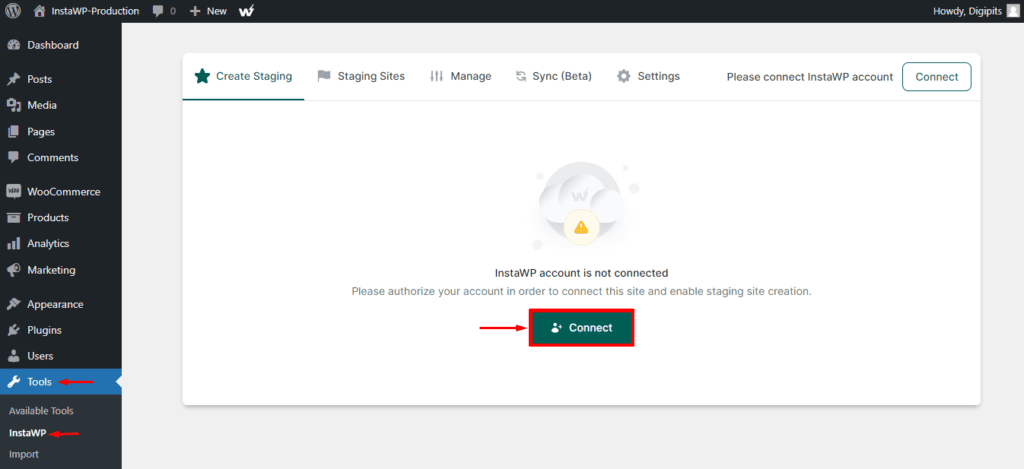
- Select your “Staging Type” like Full Staging.
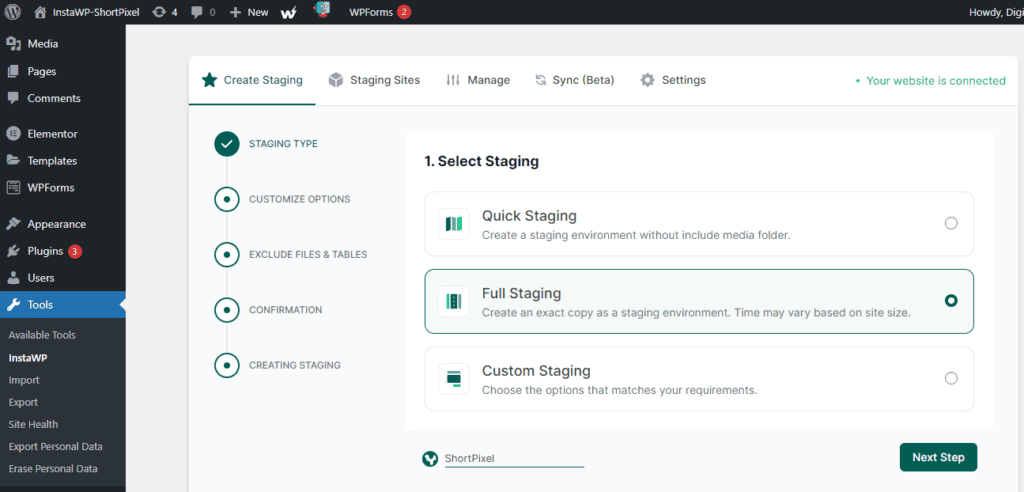
- Customize Options to select preferred data for your staging site.
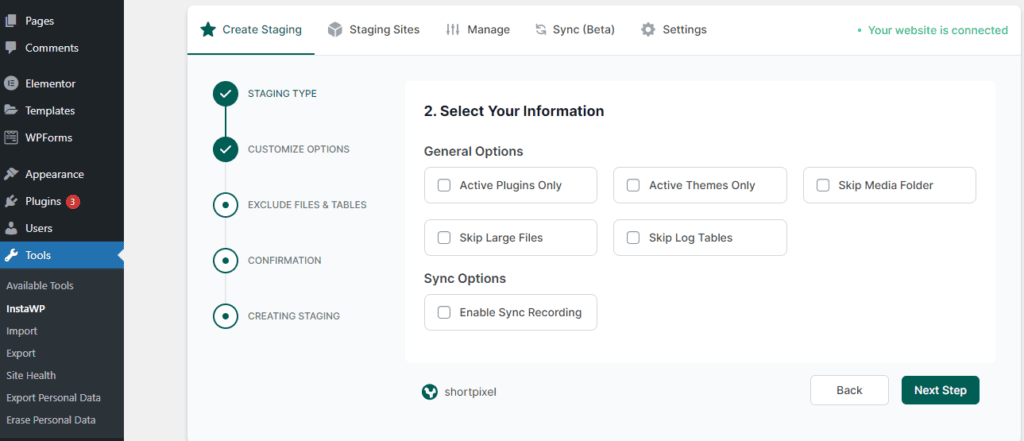
- You can skip the Exclude Files and Tables section by simply clicking Next Step, and lastly, click Create Staging to make a copy of your live site to test and migrate.
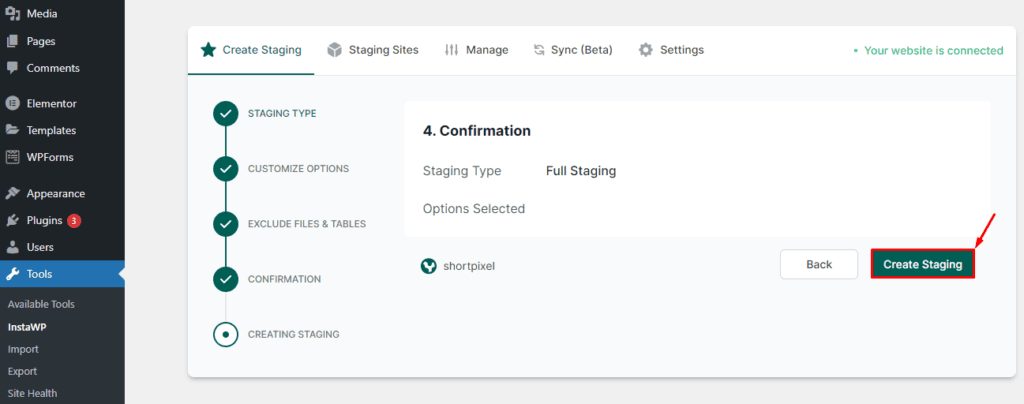
- It will take a few minutes to create a clone/staging of your live site on InstaWP.
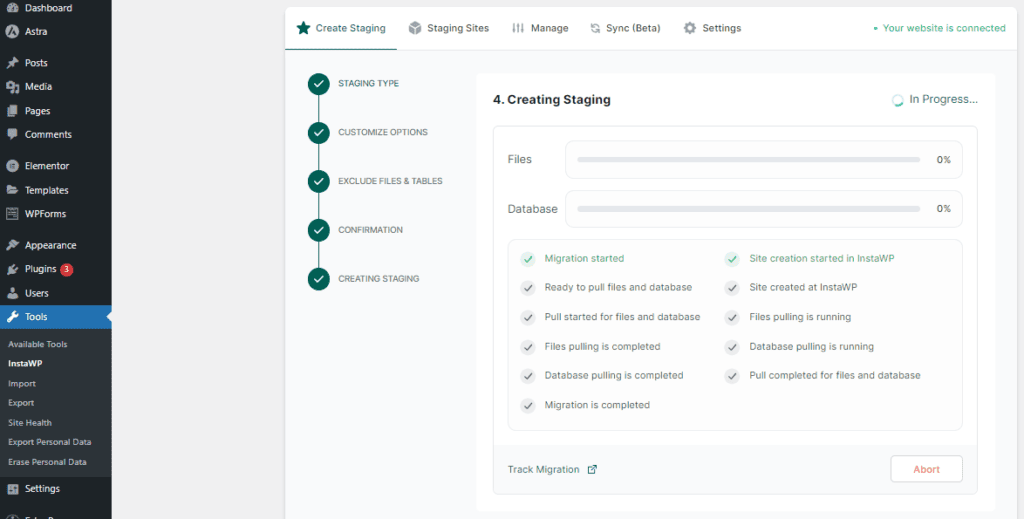
- Once it’s created, you can access a live URL from your InstaWP Dashboard.

Tada! Feel free to use this site to test your site images and ensure everything is working correctly. You will have full access to the newly created copy of your site and you can perform any task such as upgrading or downgrading the PHP version.
2. Testing WordPress Site Images Before Making it Live
Now, it’s time to test the images on your InstaWP site (clone/staging) before making it live. You can open your live site in one tab of your web browser, and in another tab, open the InstaWP clone/staging site.
This side-by-side comparison will allow you to assess how the images appear on both versions of your site..
1. Start comparing the images by viewing them side by side on both the InstaWP clone site and your live site.
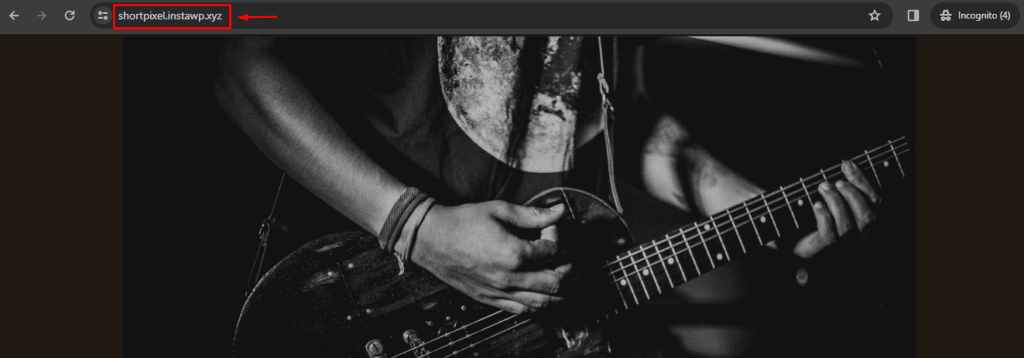
2. Next, to optimize the images on the InstaWP URL, you will need to connect your new site with ShortPixel in order to optimize your images.
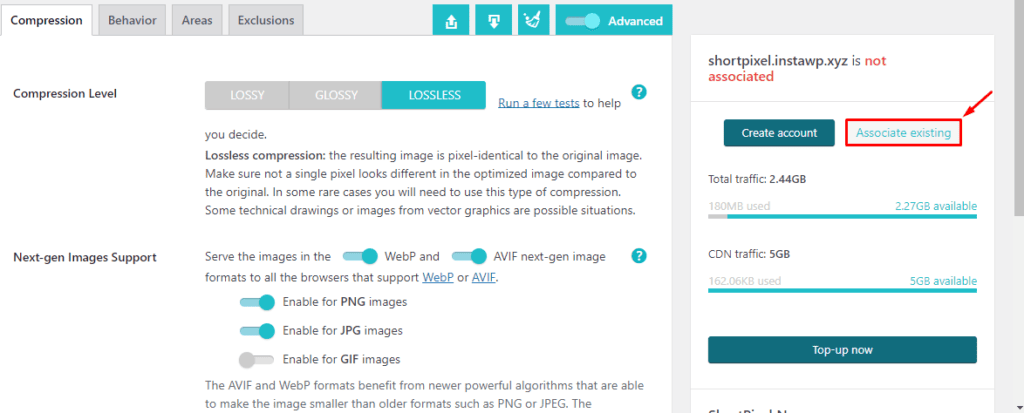
3. If everything is okay, you can now open the media file and check the sizes of the site images.
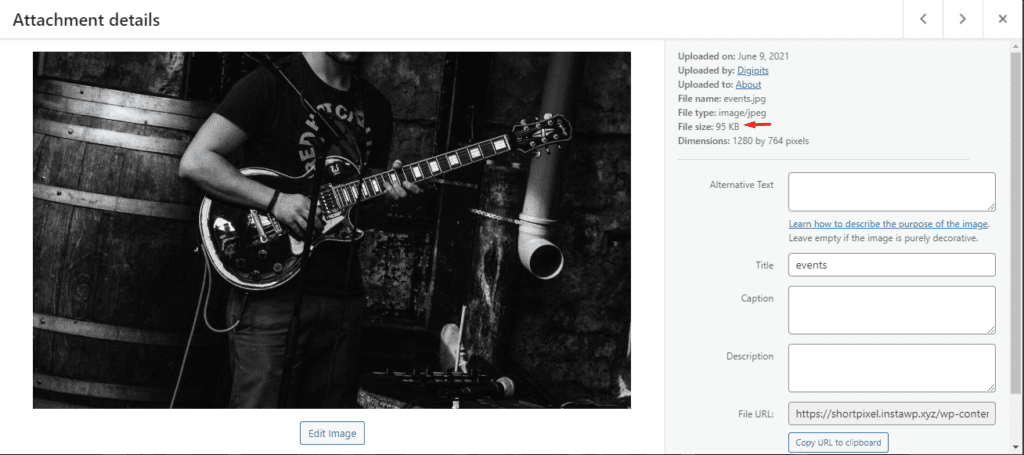
4. You can check and verify the alt texts of your images. If any are missing, simply open the image from the media section and add them accordingly.

5. Rest assured, InstaWP takes care of the image URLs, so you don’t need to worry about it. However, if you encounter any image URL issues, you can easily change and fix them from InstaWP’s DB Editor.

From the DB Editor, you have the option to replace your old site URL with the InstaWP site URL.
UPDATE wp_posts SET post_content=(REPLACE (post_content, ‘yourlivesite’,’instawpsite’));

Once you are done with the testing, then you can migrate and make your site live from InstaWP.
3. Migrate and Make Your Site Live
With InstaWP, you can migrate your site to any WordPress hosting provider. Plus, you also have the InstaWP Live option that allows you to host your site with them and make it live directly on their fully managed WordPress hosting platform.
So, simply disconnect your site and move your site to a new host with just a few simple steps. If you need any help with the steps then they have already covered a step-by-step guide. For more details: WordPress Site Migration – InstaWP.

And if you are considering hosting your site with InstaWP, no worries, they offer blazing-fast hosting plans at affordable prices.

Conclusion
Migrating your WordPress site and dealing with site images during migration can be tricky. To handle it seamlessly and correctly, you can follow our migration tips (Dos and Don’ts of Migration). And, consider using a developer-friendly platform like InstaWP that helps you test your website before making it live and can save a lot of time.
Remember to always migrate your site first to a dummy or staging URL. This way, you can check any issues and fix them without affecting your live site.
With InstaWP’s developer-friendly platform and ShortPixel’s image optimization, dealing with site images during migration is a breeze.